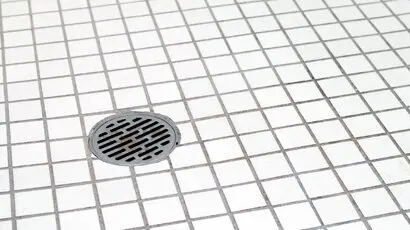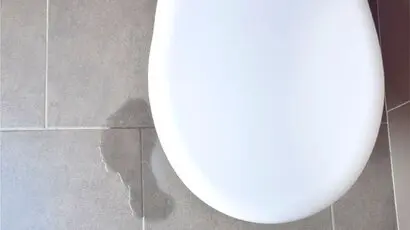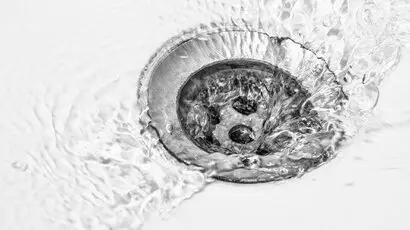The Drip, Drip, Drip of Doom
That faint dripping sound from your bathroom at night is easy to ignore at first, but it only gets worse over time.
When you finally take a closer look, there it is: a leaky basin faucet. It might seem like a minor issue, but those little drips can waste a surprising amount of water and hike up your bill.
Before calling a plumber or bracing for a bigger bill, consider tackling it yourself with some DIY repair work.
Identifying the Leak Source
When it comes to fixing a leaky basin, the first and most critical step is accurately identifying the leak’s source. By pinpointing the exact location of the problem, you can save valuable time and money while also preventing further damage to your bathroom.
Targeting the right component for repair means you won’t waste resources replacing parts that don’t need fixing. It also ensures that you stop the water from seeping into other areas, which can lead to more extensive damage, such as mould growth or structural issues.
To help you locate the leak, here’s a guide to common basin leak locations and the clues that can help you pinpoint the culprit:
![2024 06 Fixing Basin Pipe Leak Fixing Basin Pipe Leak]()
Tap Base
If you notice a drip or puddle at the base of your faucet, the likely cause is a worn washer or O-ring. These small but essential components can deteriorate over time, allowing water to escape. Replacing the washer or O-ring is usually a straightforward fix.
Handles
Leaking handles can have a few different causes. If the leak is coming from the base of the handle, it might be due to a loose packing nut that needs tightening. If the leak persists after tightening, the internal components of the handle may need replacement.
Spray Hose Connection (if applicable)
For basins with a spray hose, wetness or drips near the connection can signal trouble. Sometimes, simply tightening it suffices, but other times the hose might need repair or even replacement.
Supply Line Connections
The supply lines are the pipes that bring fresh water to your faucet. If you notice dampness or dripping around these connections, it could be due to loose fittings or corrosion.
Tightening the connections with a wrench may solve the issue, but heavily corroded fittings may need to be replaced.
Drain Pipes
If you see water pooling under your basin or in the cabinet below, the problem likely lies with the drain pipes. A damaged or loose pipe can allow water to escape, leading to leaks and potential water damage. Depending on the extent of the issue, the pipes may need repair or replacement.
By carefully inspecting each possible leak source, you’ll pinpoint the problem and be ready to fix it. And don’t forget, if any step feels tricky or the issue seems complex, getting a professional plumber involved is a smart move.
Finding the cause of a leak early is key to preventing water damage and expensive fixes later on. Staying proactive means keeping your bathroom in great shape and dodging bigger headaches down the line.
Prepping for the Fix: Essential Tools
Before diving into your basin leak repair, gather these key tools:
- Adjustable wrench: This versatile workhorse tackles various-sized nuts and fittings, loosening or tightening them as needed.
- Basin wrench: Designed for tight under-sink spaces, its long handle and self-adjusting jaws grip and turn those hard-to-reach faucet nuts.
- Phillips head screwdriver: Keep this handy for tightening or loosening screws that hold faucet handles in place.
- Flathead screwdriver: This tool goes beyond just turning screws. It can pry apart stubborn faucet components or remove damaged washers.
- Pliers (adjustable or channellock): When an adjustable wrench won’t budge a stubborn nut or fitting, pliers with their gripping jaws provide extra leverage.
- Bucket: Leaks happen! A bucket catches drips and spills, keeping your work area clean and preventing water damage.
- Flashlight: Those cramped under-sink areas can be shadowy. A flashlight illuminates the workspace, ensuring you don’t miss a crucial detail.
- Rags: Leaks and repairs often mean water. Keep a few rags on hand for wiping up spills and cleaning surfaces as you work.
With this arsenal assembled, you’re well-equipped to tackle most basin leak repairs!
![2024 06 Tools For Fixing Basin Leaks Tools Fixing Basin Leaks]()
Safety Precautions
Working with plumbing can lead to unexpected hazards. Prioritise safety to prevent injuries and property damage. Here are key precautions:
- Turn off the water supply before repairs. Locate the shut-off valves under the basin or near the wall.
- Wear eye protection to shield yourself from splashes or debris.
- Consider gloves to protect your hands from sharp edges and cleaning products.
Remember, detailed repair instructions depend on your leak source. Refer to a separate guide for specific steps. Common fixes include replacing washers, tightening connections, or resealing drains. Remember to follow instructions carefully to prevent further complications.
When to Call a Plumber
![2024 06 Fixing Basin Leak Fixing Basin Leak]()
DIY plumbing repairs can be tempting, but there are times when calling a professional is best. Consider a plumber for:
- Extensive leaks or damage beyond your expertise.
- Leaks are hidden behind walls or in concealed locations.
- Difficulty pinpointing the leak source.
- Lack of confidence in your DIY abilities.
Get Your Basin Back in Top Shape With a Little DIY Know-How
Armed with the right tools and materials, you can tackle that pesky basin leak yourself! But remember, if the job seems complex or you’re uncomfortable diving in, don’t hesitate to call a professional.
For expert leak repairs on your basin and peace of mind, contact the trusted plumbers at WP Plumbing. We’re always happy to help!






